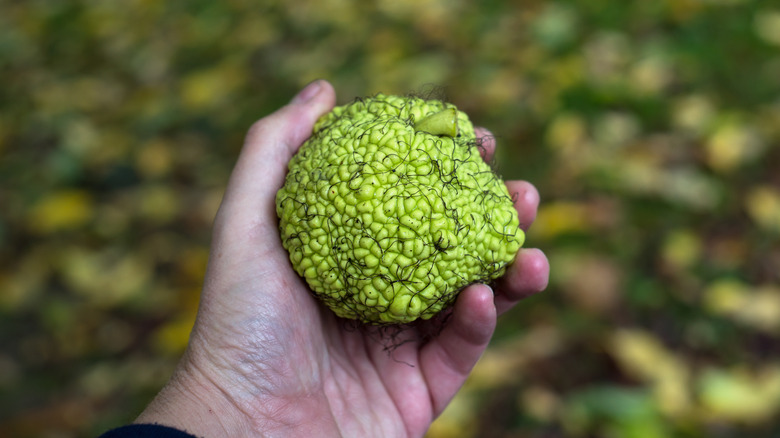Can Hedge Apples Really Keep Pests Away From Your Home?
The debate around hedge apples as a home pest deterrent is a curious one. These fruits, known scientifically as Maclura pomifera, are often touted for their supposed ability to keep away common household pests. The method involves placing the green fruits in basements or around the foundation of homes, with claims of effectiveness against cockroaches, spiders, boxelder bugs, and other pests. However, while some homeowners swear by its effectiveness, experts often present a more nuanced view that the fruit's use in pest control, believing it is rooted in folk remedies rather than robust scientific evidence.
To fully understand how true these claims are, it helps to know more about the characteristics of these fruits. Hedge apples are distinctive in appearance, with a bumpy, green surface and a sizeable diameter. Originating from the osage orange tree, they are more of an ornamental curiosity than a dietary option; most wildlife, including birds and animals, find them unappealing. This limited appeal suggests a certain degree of natural bug repellant properties. It also sparks questions about their potential as a natural pest control agent. In support of these claims, a 2002 study published in the Journal of Essential Oil Research has offered insights that support the belief in the fruit's insect-repelling abilities. The research conducted on hedge apples focused on isolating specific compounds within the fruit. These compounds, when tested in controlled laboratory conditions, demonstrated some ability to repel insects like German cockroaches. However, the science behind the study is not clear-cut, leaving room for skepticism.
Translating these findings into home pest control
While certain chemicals extracted from hedge apples are known to help with pest control, the effectiveness of whole hedge apples, especially when used in typical home settings, remains questionable. Translating this into effective home pest control is an entirely different matter. Some believe that this effect may diminish in real-world scenarios, particularly in larger and more ventilated spaces like homes. This discrepancy highlights the complexity of translating lab findings into practical, everyday solutions. And then there's the topic of sliced versus whole. Indeed, in smaller spaces, sliced hedge apples did show some promise as a repellent. However, the use of whole fruits for this purpose is less convincing. The key factor here is the concentration and dispersion of the repellant compounds. In open areas, these compounds are likely to dissipate quickly, reducing their effectiveness.
The research also delved into the specific nature of these repellant compounds. It turns out that not all insects are equally repellent by hedge apples. This specificity limits their utility as a broad-spectrum pest control solution. Furthermore, these substances might not at all deter non-insect pests like spiders, millipedes, and centipedes, which are common household annoyances. The unique chemical makeup of hedge apples piques the interest of scientists looking into natural pest control methods. However, as the studies indicate, the leap from a laboratory finding to an effective home remedy is significant.
Alternative natural pest-repellent methods
The findings from the study serve as a reminder of the complexities involved in harnessing natural remedies and the importance of thorough, context-specific research in making informed decisions about pest control. Moreover, the fruit's composition raises further questions. The milky sap in hedge apples can be irritating to human skin, which necessitates careful handling. This factor, combined with their large size and distinctive odor, makes them less practical for indoor use compared to other, more conventional pest control methods.
If you're seeking natural methods to repel pests, there are several effective alternatives to consider. Diatomaceous earth is one such option. Diatom organisms make up this fine powder. When applied around the house, particularly near entry points, baseboards, and in areas where pests are common, diatomaceous earth can effectively kill insects by dehydrating them. It's important to use food-grade diatomaceous earth and to apply it carefully to avoid inhalation.
Essential oils have also gained popularity as natural pest repellents. Oils like peppermint, eucalyptus, and lavender are not only pleasing to the human nose but are also repulsive to many types of insects. These oils can be diluted with water and sprayed around the house or used in diffusers to create an insect-repelling ambiance. Essential oils are a safe and pleasant-smelling alternative to chemical insecticides, although their effectiveness can vary.


